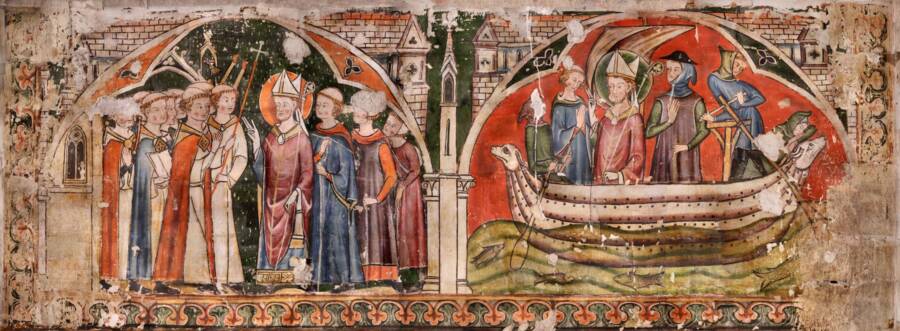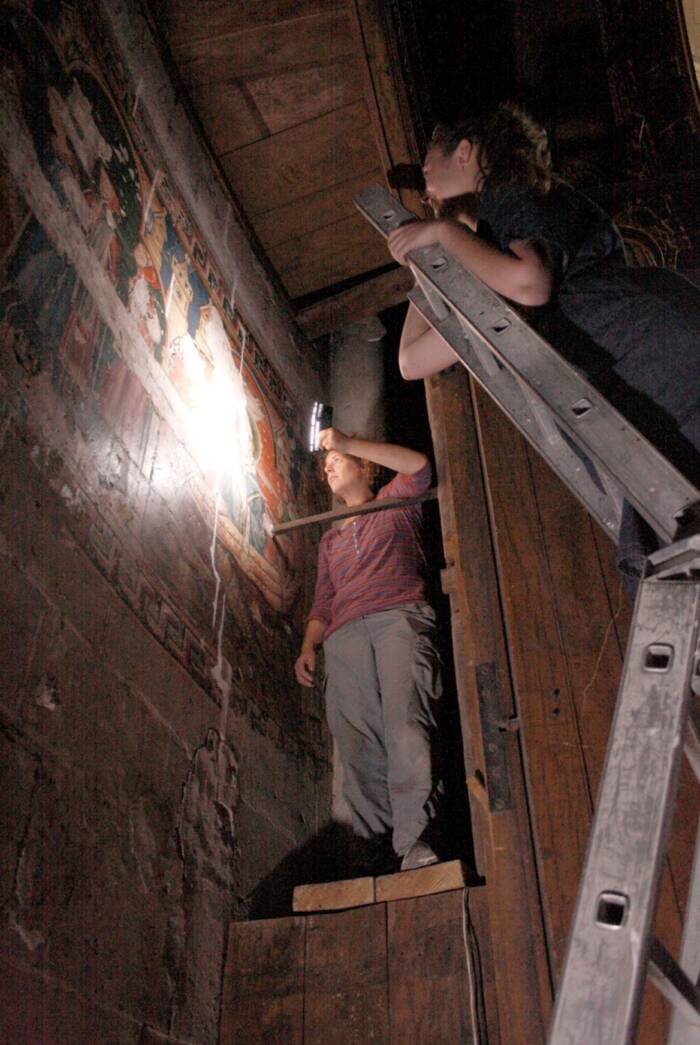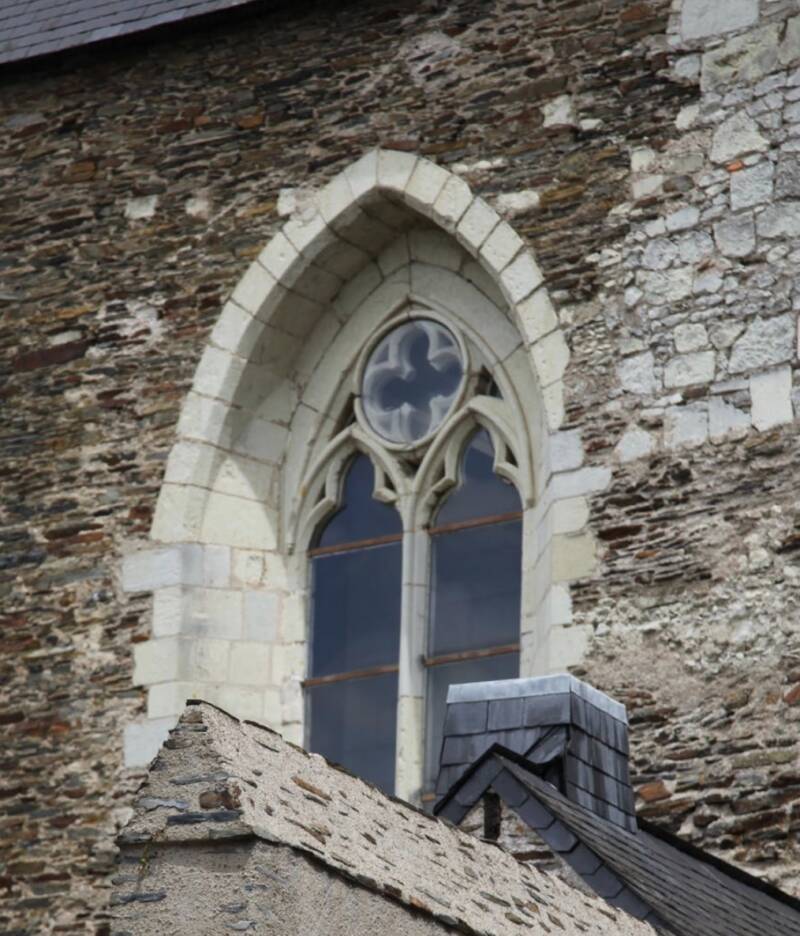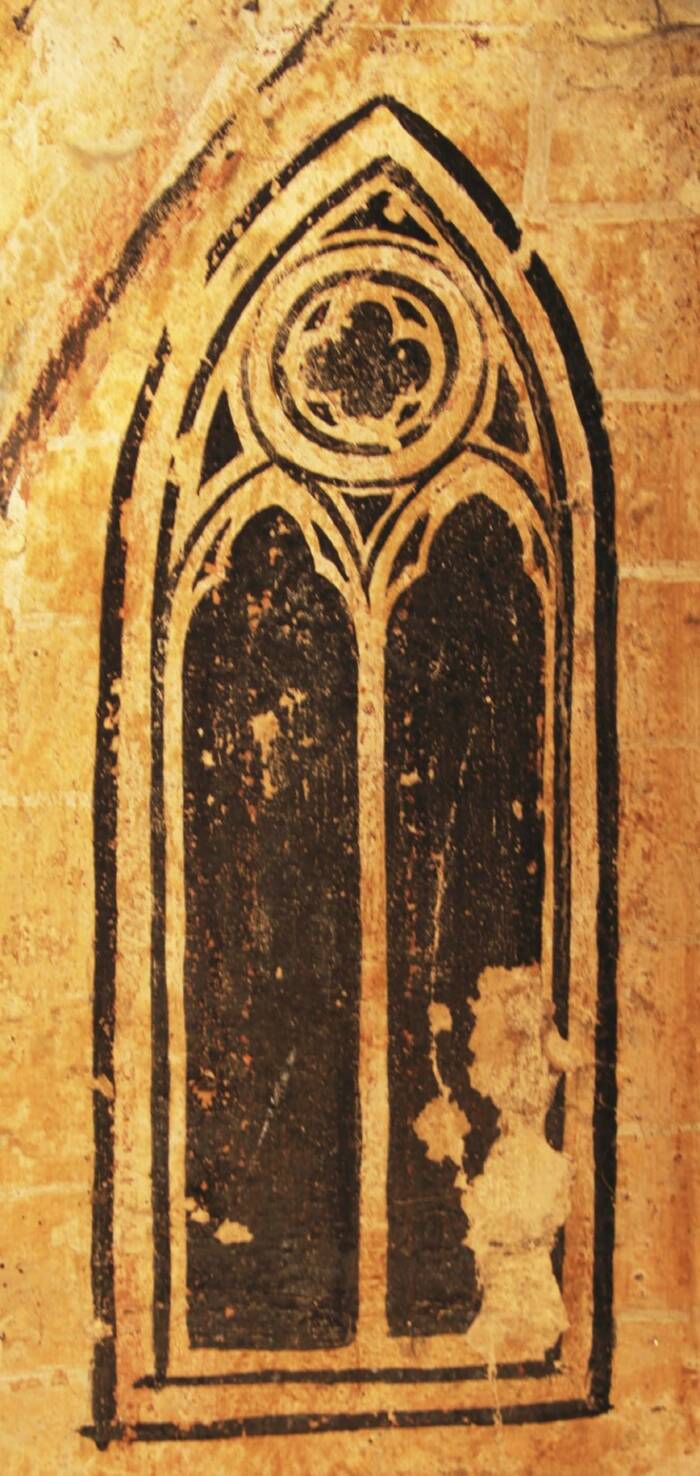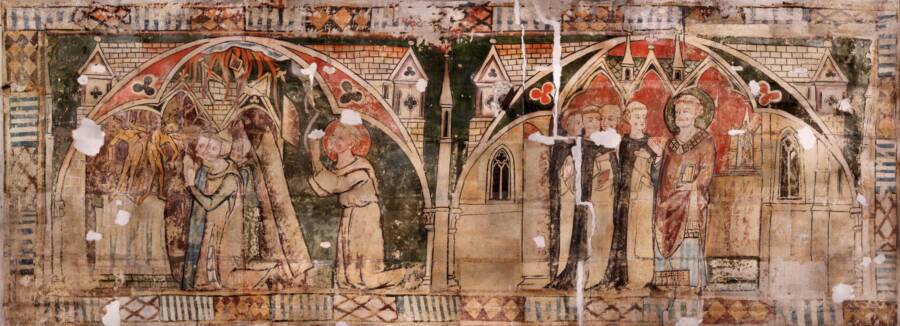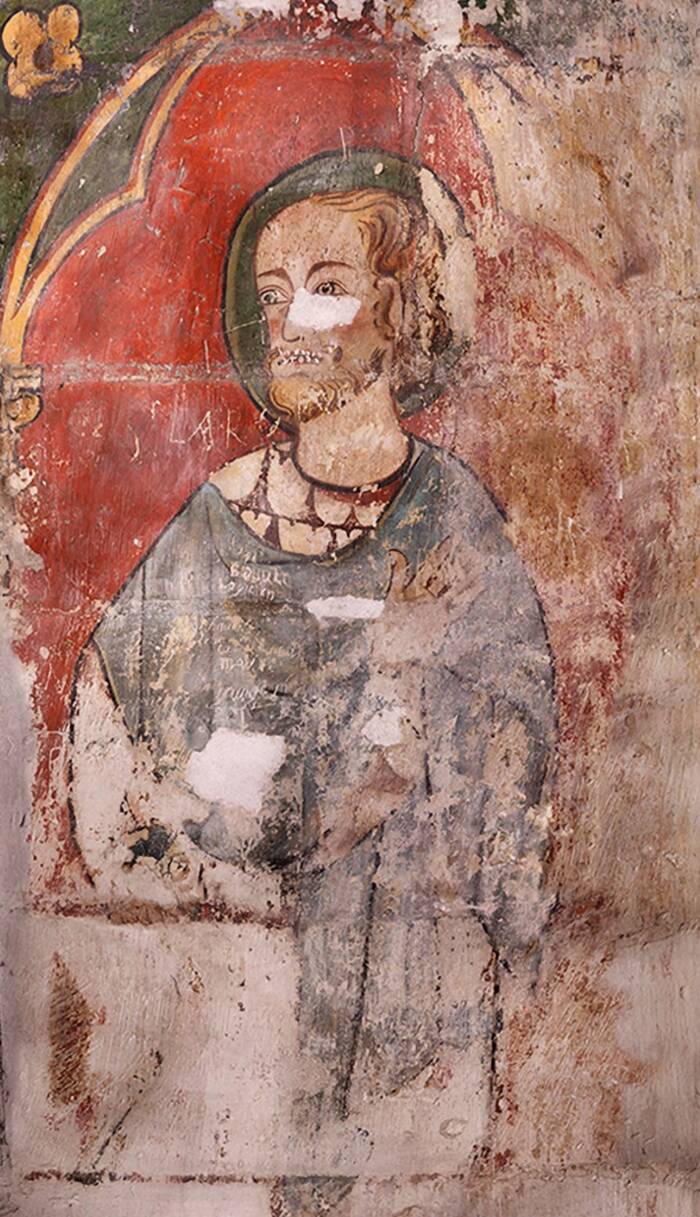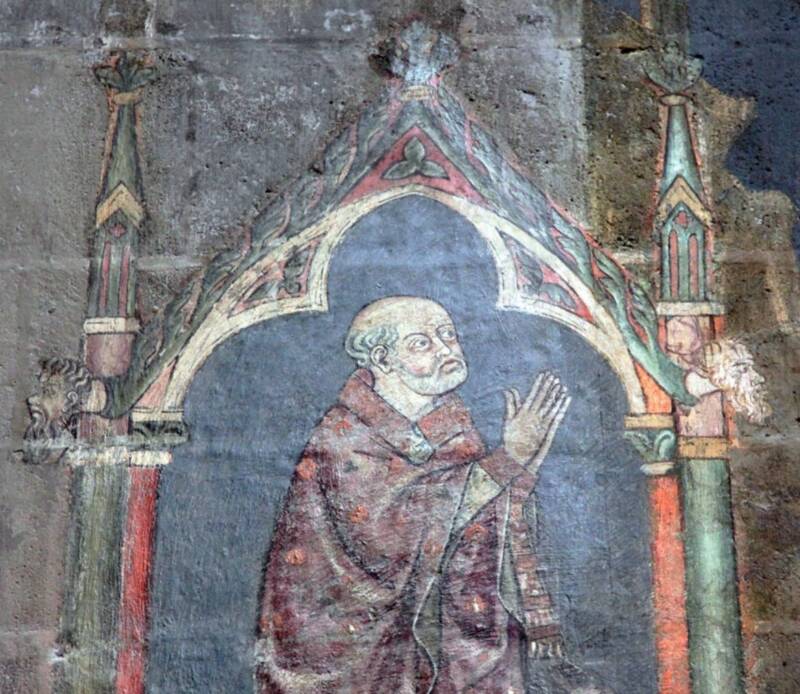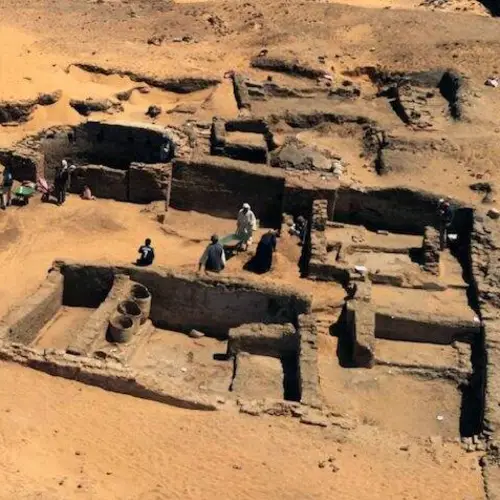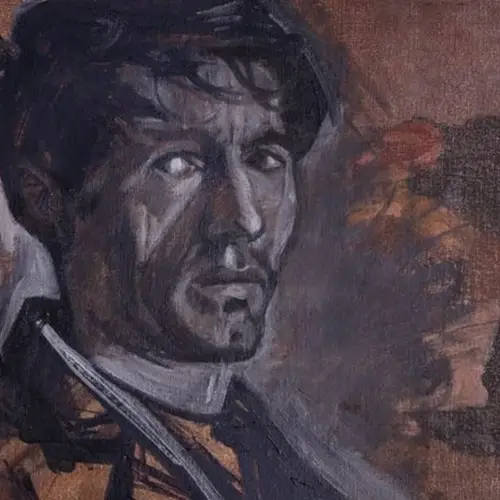First discovered in 1980, these stunning murals depicting the life and miracles of St. Maurille have now been made visible to the public for the first time in centuries.
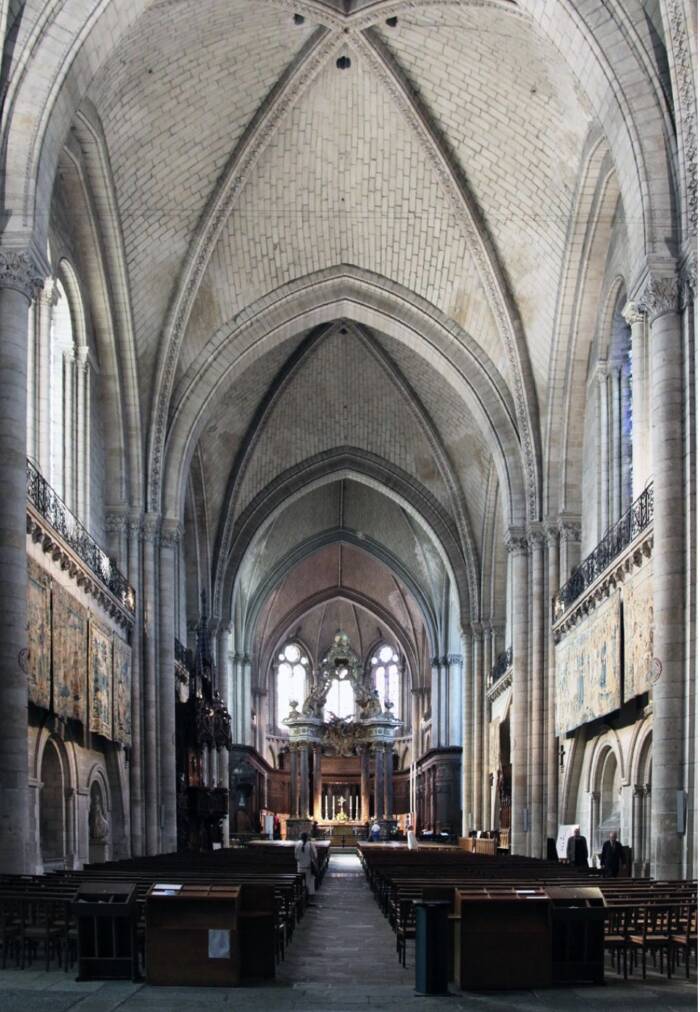
Paul BinskiThe interior of Angers Cathedral, where the 13th-century murals were first discovered in 1980.
Stunning medieval wall paintings inside France’s Angers Cathedral remained hidden for centuries. But now, for the first time, conservators from the University of Cambridge’s Hamilton Kerr Institute have photographed and cataloged these once-lost murals. In total, they captured more than 8,000 photographs of the paintings, making them visible to the public for the first time in hundreds of years.
The painstaking process of stitching these thousands of photographs together was carried out by the Hamilton Kerr Institute’s Chris Titmus, a job that took many years to complete. The end results are the first full-color images of the paintings, which depict the life and miracles of St. Maurille, a fifth-century bishop of Angers.
Details of the project were recently published in the November 2024 issue of the Bulletin of the Hamilton Kerr Institute.
Hidden Gothic Murals Inside France’s Angers Cathedral Tell A Fascinating Story
The hidden murals were initially discovered in 1980 by a group of conservators led by Robert Baudouin of the Laboratorie des Monuments Historiques. In 1984, work began to reveal the paintings in more detail, with the removal of whitewash that had been applied starting in the 1400s. That work continued well into the 1990s, steady unveiling more and more pieces of the murals. Eventually, researchers realized that the murals told the story of St. Maurille.
St. Maurille was a bishop and follower of St. Martin who had failed to raise a child from the dead. In his shame, St. Maurille left for Britain and threw away his church keys.
The keys were then swallowed by a fish. Penitent, St. Maurille worked as a gardener for the king until, one day, the very same fish who swallowed his keys was served at the king's banquet. Upon seeing the keys, St. Maurille's identity was revealed, and he returned once again to Angers.
There, St. Maurille again attempted to revive the boy — only this time, it worked. The boy rose from the dead and became St. René, the relics of whom are supposedly found in the cathedral alongside St. Maurille's.
Today, however, the story of St. René is now believed to be a complete fabrication, and as such it is unlikely that any of his relics would be found in the cathedral. Still, the story was powerfully resonant for believers at one time, and the murals found painted on the walls of Angers Cathedral recount it in stunning detail.
Conservators dated the paintings to around 1270, noting that a fire in the mid-15th century prompted a layer of whitewashing to be placed over the murals to protect them from any further damage or attacks by iconoclasts. When they were discovered by a priest in 1980 and subsequently analyzed and restored by conservators, they only managed to capture partial black-and-white images.
The new images, however, show off the paintings in stunning, full-color detail.
The Painstaking Process Of Stitching Together The Angers Cathedral Murals
Since the paintings were hidden away for centuries, they were incredibly well preserved. Unfortunately, their placement behind the Baroque walls also posed a challenge for conservators hoping to catalog them. The narrow spacing between the paintings and the barrier made it difficult to maneuver, and even more difficult to capture clear photographs of the paintings.
Speaking to The Art Newspaper, Emily Guerry said the paintings were "absolutely sensational but trying to photograph them, spending days inching along a narrow space through dust and dead pigeons, trying to get the light and the camera angle identical for every shot, was a nightmare."
In their observations, Guerry's colleagues Paul Binski, an emeritus professor of the history of Medieval art at Cambridge University, and Lucy Wrapson, senior conservator at the Hamilton Kerr Institute, noted that these paintings were not frescoes but rather oil paint. They also noted similarities between the Angers Cathedral murals and wall paintings at Westminster Abbey in London, dated to around the same time.
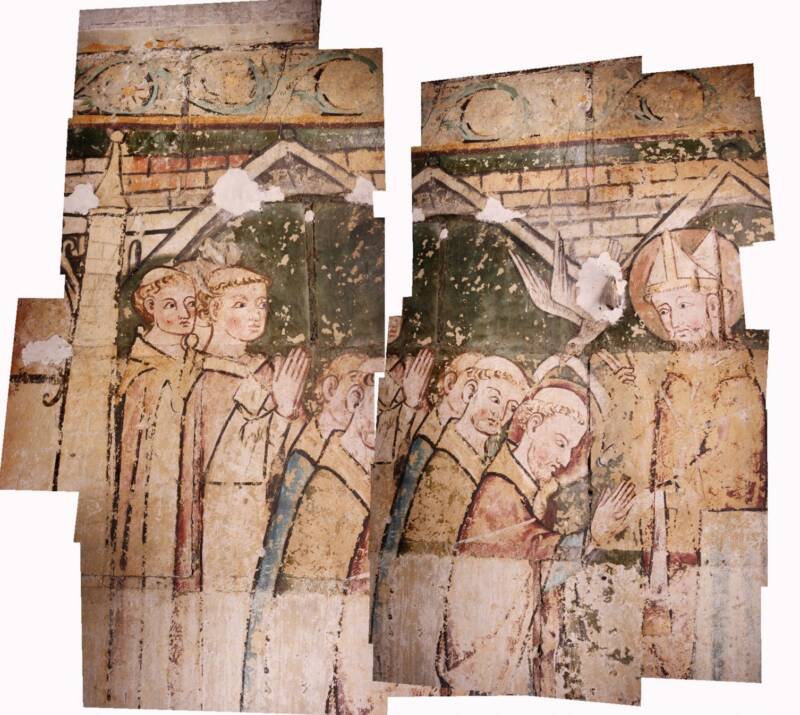
Lucy Wrapson and Chris Titmus/Hamilton Kerr Institute/University of CambridgeAn example of how Chris Titmus stitched together various bits of the murals digitally.
The photographs they captured were taken from a variety of angles, with varying focal lengths, all of which were limited by the tight space. In all, conditions were not ideal for capturing great photographs. Still, the team managed to pull it off and stitch the images together — a tedious process that took a number of years.
"Stitching the images could not be achieved automatically, as in some areas the distortions created by the difficulty of the photography were too great for the software (Adobe Photoshop) to cope," Wrapson and Titmus wrote in the bulletin. "Instead, the images were manually stitched, meaning that these images should be regarded as photographic reconstructions rather than accurate, measured photographic records of the paintings."
Regardless, the project allowed images of the Angers Cathedral murals to be made available to the public for the first time, finally bringing a once-lost piece of history to light.
After seeing these stunning murals discovered at Angers Cathedral, explore King Alfred's Tower. Then, see the devastating effect of the Notre Dame fires.
